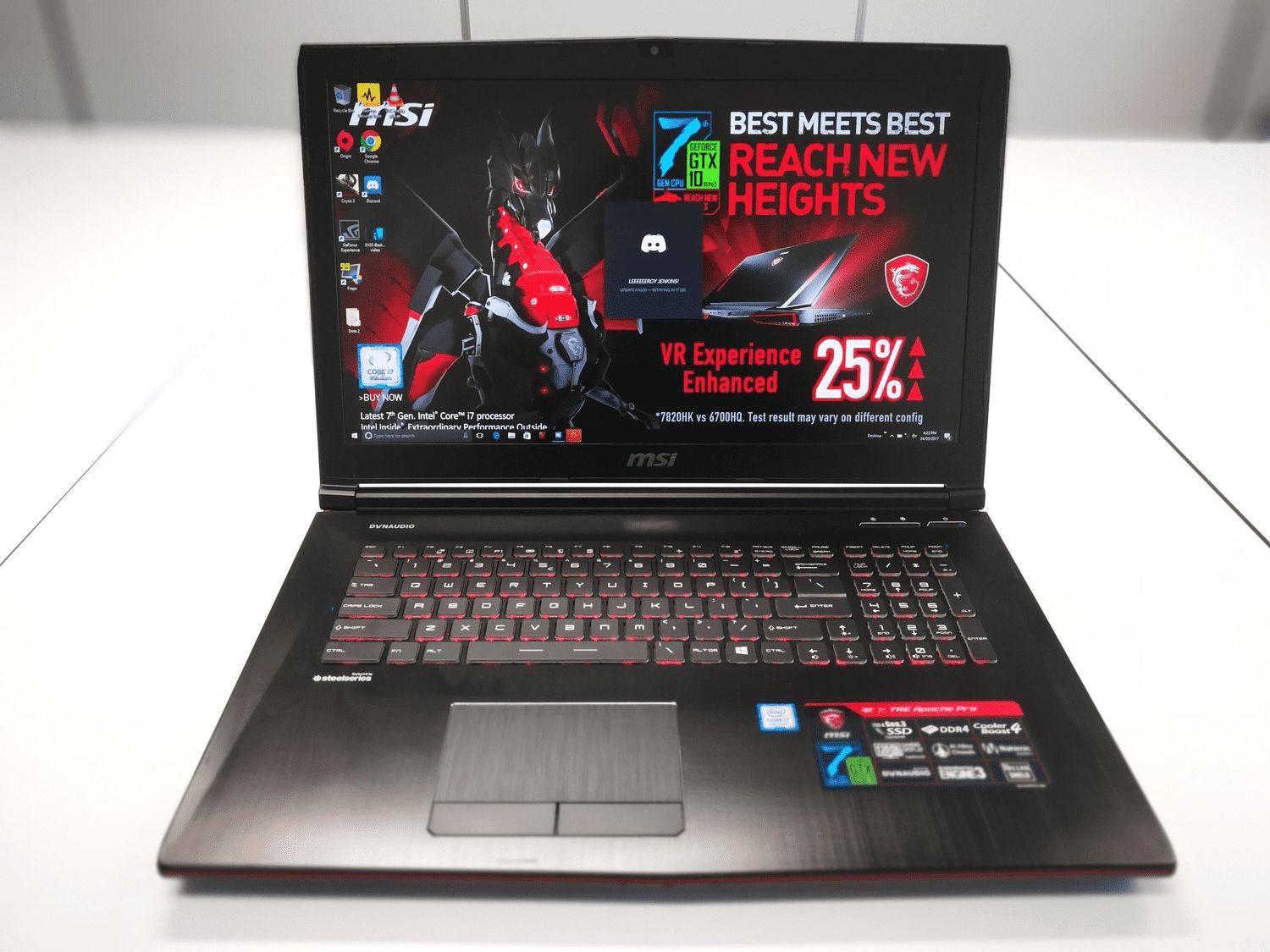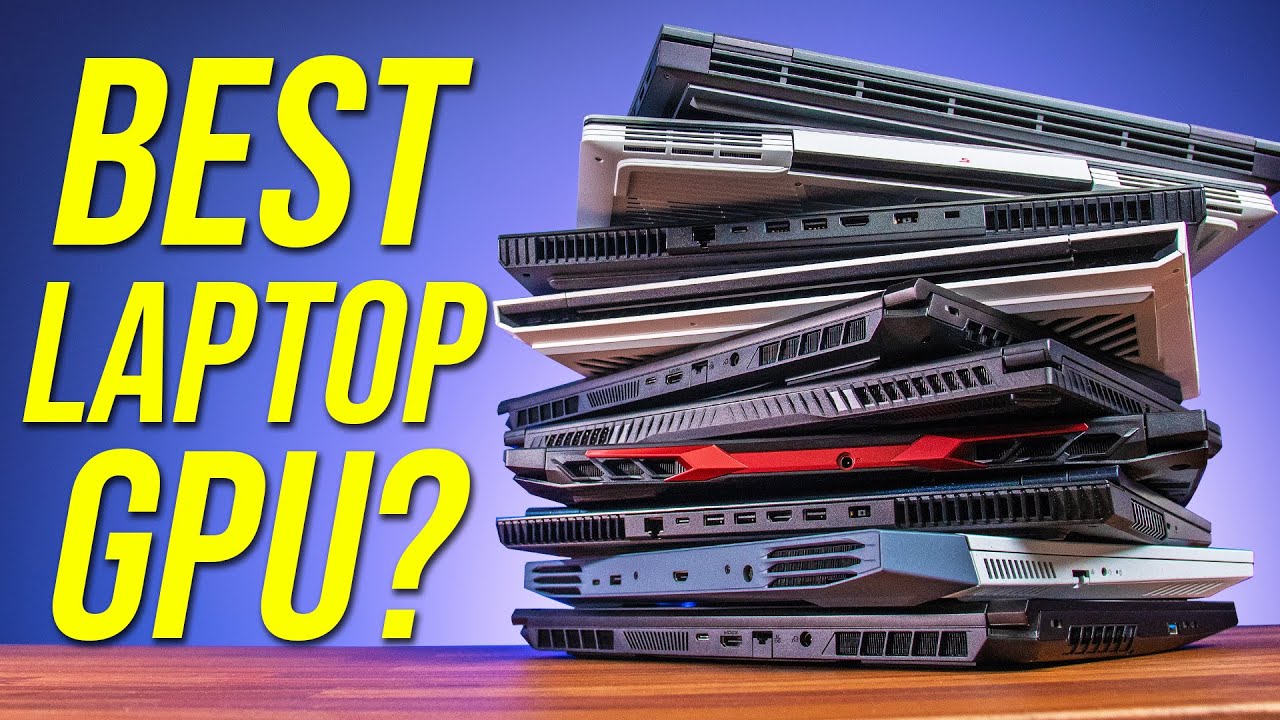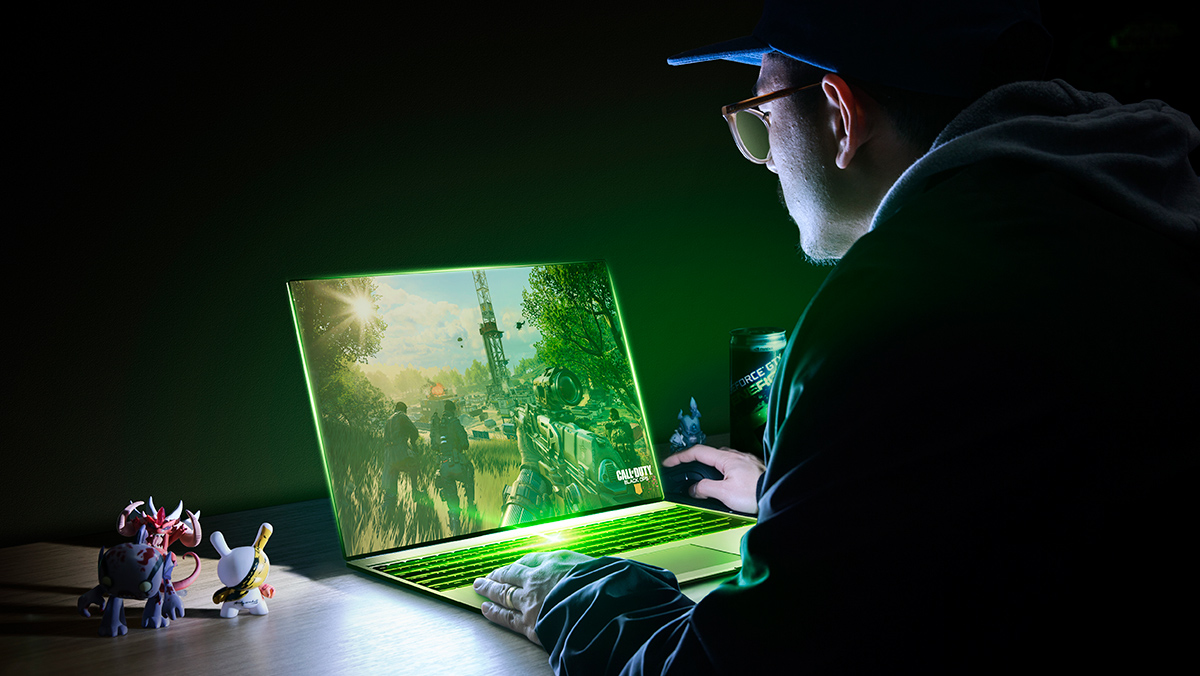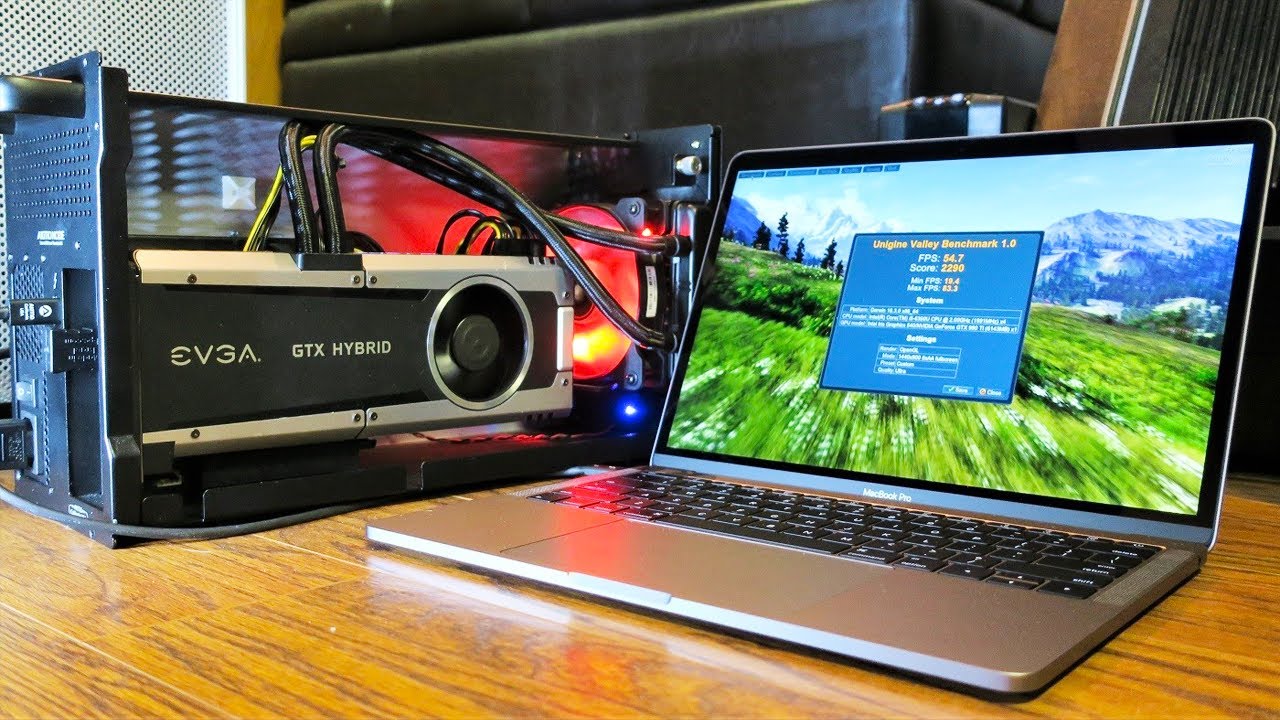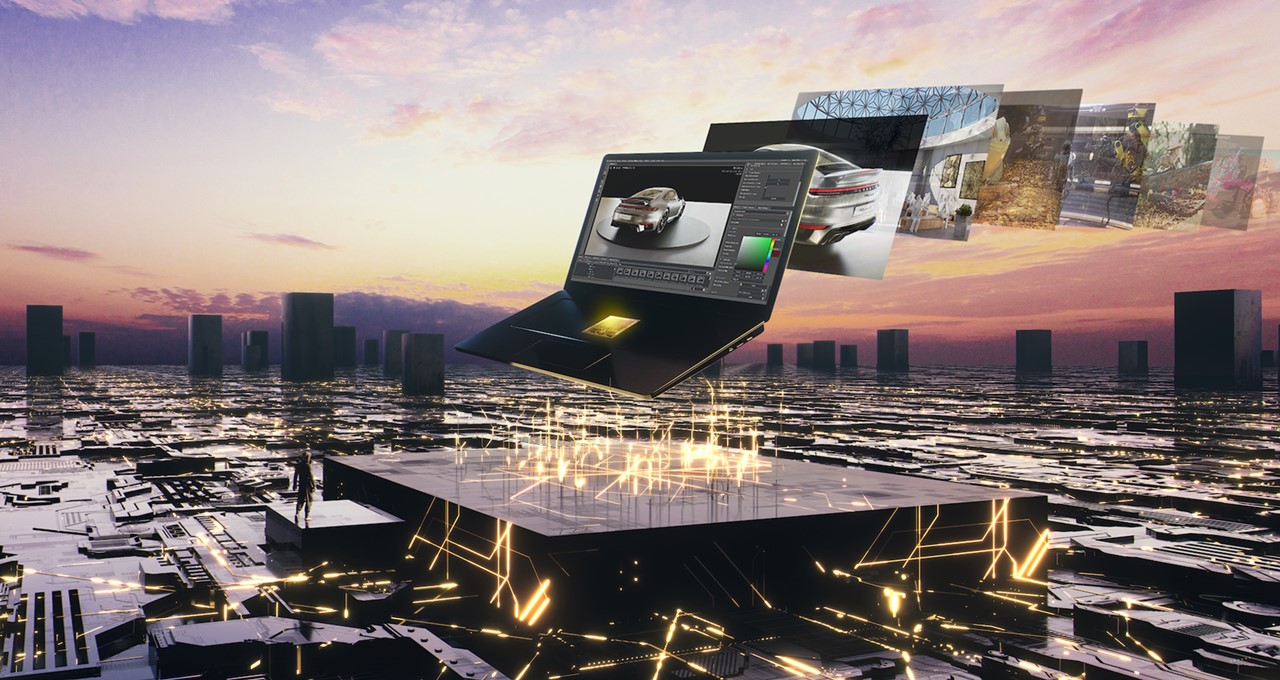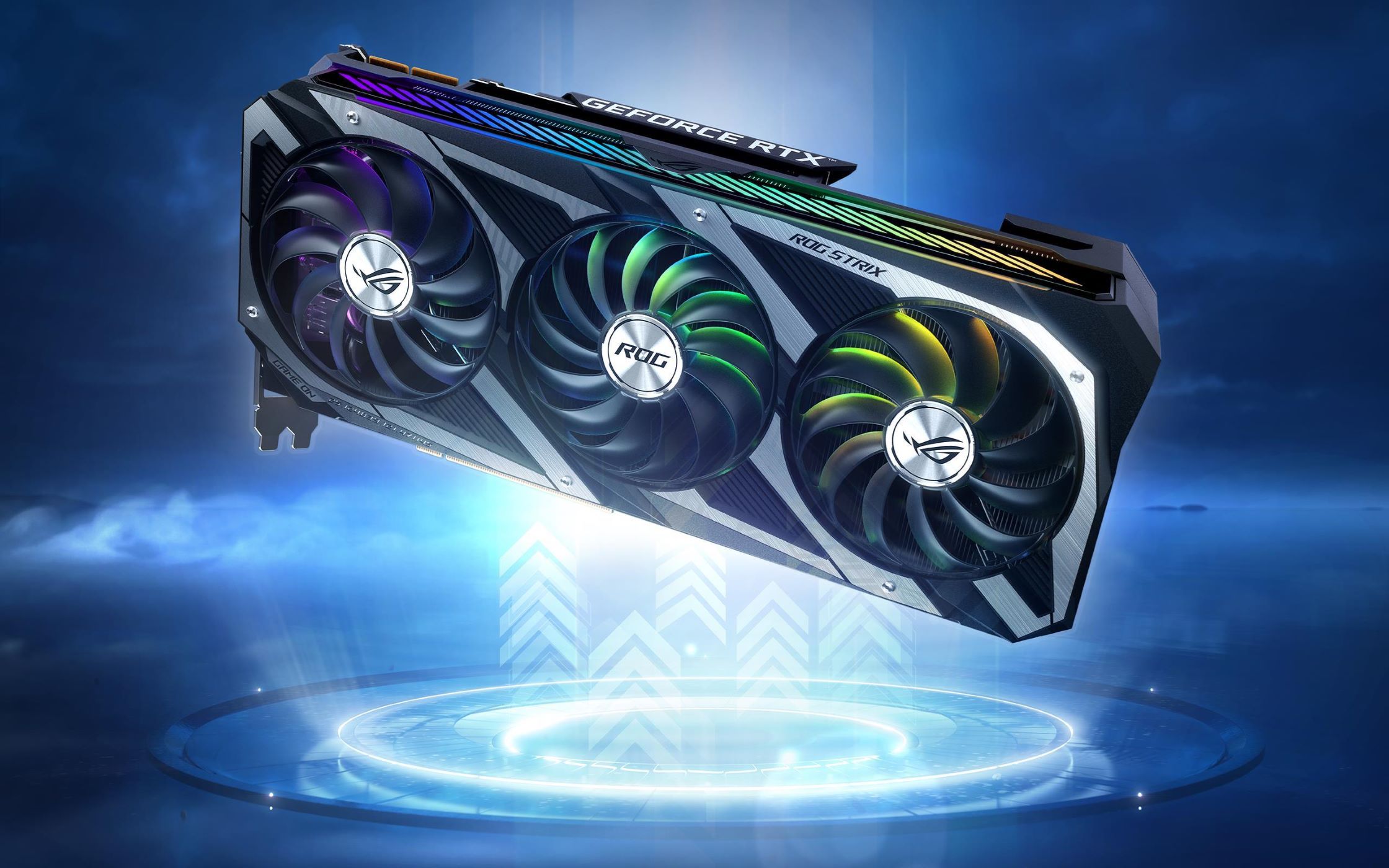What Is A GPU In A Laptop
A GPU, or Graphics Processing Unit, is an essential component in a laptop that is responsible for rendering and processing images, videos, and animations. It is designed to handle complex mathematical and graphical calculations quickly and efficiently, allowing for smooth and realistic visuals on your laptop screen.
The GPU in a laptop works in partnership with the CPU, or Central Processing Unit, to deliver high-performance graphics. While the CPU handles general computing tasks, the GPU is specifically optimized for handling graphics-intensive applications such as gaming, video editing, 3D modeling, and image rendering.
Modern GPUs in laptops are equipped with hundreds or even thousands of processing cores, allowing them to perform parallel processing and tackle complex graphics-related tasks with ease. They also have their own dedicated memory, known as VRAM (Video Random Access Memory), which is specifically designed for storing and accessing graphics data quickly.
With the increasing demands of modern software and applications, a powerful GPU in your laptop is crucial for a seamless and immersive computing experience. Whether you’re a gamer, a visual artist, or simply someone who enjoys watching high-definition videos, a capable GPU will ensure that you can enjoy smooth and visually stunning performance in all your activities.
Next, let’s explore the importance of GPUs in laptops and how they impact various aspects of your computing experience.
Introduction
Laptops have become an indispensable tool for many individuals, serving a multitude of purposes from work to entertainment. As technology continues to advance, the components inside laptops have evolved to meet the increasing demands of users. One such essential component is the GPU, or Graphics Processing Unit.
In this article, we will explore what a GPU is, its importance in laptops, the difference between integrated and dedicated GPUs, tips for choosing the right GPU for your laptop, and ways to optimize GPU performance.
Whether you’re a casual laptop user or someone who relies heavily on graphics-intensive tasks, having a solid understanding of GPUs and their role in laptops is crucial. By the end of this article, you will have a comprehensive understanding of GPUs and be equipped with the knowledge to make informed decisions when it comes to selecting and optimizing your laptop’s GPU.
So, let’s dive in and unravel the world of GPUs in laptops.
What Is a GPU?
A GPU, or Graphics Processing Unit, is a specialized electronic circuit designed to accelerate the creation and rendering of images, videos, and animations. It is responsible for executing complex mathematical calculations and manipulating graphics data to produce high-quality visuals.
Traditionally, CPUs were used to handle both general-purpose computing tasks and graphics processing. However, as the demands for graphics-intensive applications increased, the need for a dedicated processor specifically optimized for graphics arose. This led to the development of GPUs.
Unlike CPUs, which typically have a few powerful processing cores, GPUs have a large number of smaller processing cores known as shaders. These shaders work together to perform multiple calculations simultaneously, allowing for faster and more efficient graphic rendering. The parallel processing capabilities of GPUs make them highly efficient in handling large amounts of data required for tasks like gaming, video editing, and 3D modeling.
Furthermore, GPUs have their own dedicated memory known as VRAM (Video Random Access Memory), which is separate from the system’s main memory. This enables the GPU to quickly access and store graphics-related data, resulting in improved performance and faster rendering times.
Today’s GPUs also incorporate specialized technologies like shader models, pixel shaders, and vertex shaders. These technologies enable advanced graphical effects, such as realistic lighting, shadows, and textures. With the advancements in GPU technology, laptops can now deliver impressive visual experiences that rival desktop computers.
It’s worth mentioning that GPUs don’t just enhance gaming experiences. They also play a crucial role in accelerating tasks like video encoding, image processing, and machine learning. Many software applications, from video editing software to data analysis tools, rely on the GPU to perform these computationally intensive tasks efficiently.
In the next section, we will delve deeper into the importance of GPUs in laptops and the impact they have on various aspects of your computing experience.
Importance of GPUs in Laptops
The significance of GPUs in laptops cannot be overstated, as they play a vital role in enhancing various aspects of your computing experience. Let’s take a closer look at the importance of GPUs in laptops:
1. Gaming: One of the primary reasons for the increased demand for powerful GPUs in laptops is gaming. A capable GPU ensures smooth frame rates, realistic textures, and stunning visual effects, allowing gamers to enjoy immersive gaming experiences without lag or visual artifacts. Whether you’re into casual gaming or competitive eSports, a dedicated GPU is essential for optimally running the latest games.
2. Visual Design and Editing: If you’re involved in visual design, video editing, or animation, having a robust GPU in your laptop is crucial. These tasks require rendering complex visual elements, manipulating high-resolution images and videos, and applying real-time effects. A powerful GPU ensures that you can work on projects smoothly, reducing rendering times and enabling smooth previewing.
3. Content Creation: Content creators, such as streamers, YouTubers, and photographers, heavily rely on their laptops to create and edit content on the go. With a capable GPU, they can seamlessly handle tasks like live streaming, video editing, and photo enhancements, ensuring their content looks professional and engaging.
4. Virtual Reality (VR) and Augmented Reality (AR): Virtual and augmented reality experiences require immense computing power to deliver realistic and immersive visuals. A powerful GPU in a laptop boosts the performance and ensures smooth interactions with virtual environments, making it suitable for both entertainment and professional applications in fields like architecture, training simulations, and medical research.
5. Multitasking and Productivity: GPUs aren’t solely limited to graphics-intensive tasks. They also contribute to the overall performance of your laptop by offloading some computing tasks from the CPU. This allows for smooth multitasking, enabling you to run several applications simultaneously without experiencing significant performance degradation.
The importance of GPUs in laptops extends beyond the applications mentioned above. It is worth noting that a powerful GPU not only enhances your user experience but also future-proofs your laptop. As software and applications continue to evolve and demand more graphical processing power, a capable GPU ensures that your laptop can handle these advancements without becoming obsolete.
In the following section, we will explore the difference between integrated and dedicated GPUs in laptops, helping you make an informed decision when choosing the right GPU for your needs.
Integrated vs Dedicated GPUs in Laptops
When it comes to GPUs in laptops, there are two main types to consider: integrated and dedicated GPUs. Understanding the differences between these two can help you make an informed decision when choosing the right GPU for your laptop. Let’s take a closer look at integrated and dedicated GPUs:
Integrated GPUs: Integrated GPUs are integrated into the laptop’s CPU. They share the system memory (RAM) and rely on the CPU’s power to handle both general computing tasks and graphics processing. Integrated GPUs are typically found in entry-level or budget laptops, as they offer basic graphics performance suitable for everyday computing tasks, web browsing, and watching videos.
While integrated GPUs are not as powerful as dedicated GPUs, they have several advantages. Firstly, they consume less power, resulting in longer battery life for your laptop. Additionally, integrated GPUs generate less heat, allowing for thinner and lighter laptop designs. These factors make integrated GPUs a good choice for users with less demanding graphics needs or those who prioritize portability and energy efficiency.
Dedicated GPUs: Dedicated GPUs, also known as discrete GPUs, are separate chips specifically designed for graphics processing. Unlike integrated GPUs, they have their own dedicated memory known as VRAM, ensuring faster and more efficient access to graphics data. Dedicated GPUs are found in high-performance laptops, gaming laptops, and laptops designed for multimedia or content creation.
Dedicated GPUs are substantially more powerful than integrated GPUs, capable of handling demanding tasks such as gaming, video editing, and 3D modeling with ease. They deliver higher frame rates, support advanced graphical effects, and provide smoother and more immersive visual experiences. If you’re a gamer or need your laptop for graphics-intensive work, a dedicated GPU is essential for optimal performance.
It’s important to note that laptops with dedicated GPUs are usually more expensive and tend to consume more power, resulting in shorter battery life compared to laptops with integrated GPUs. Additionally, laptops with dedicated GPUs may be bulkier to accommodate the extra cooling required to dissipate heat generated by the GPU.
Ultimately, the choice between integrated and dedicated GPUs depends on your specific needs and budget. If you primarily use your laptop for everyday tasks and have limited graphics requirements, an integrated GPU may suffice. However, if you’re a gamer, a visual artist, or require a high level of graphical performance, investing in a laptop with a dedicated GPU is recommended.
In the next section, we will provide some tips to help you choose the right GPU for your laptop based on your specific requirements.
Choosing the Right GPU for Your Laptop
When selecting a laptop, a key consideration is the GPU that it comes equipped with. The right GPU can significantly enhance your computing experience, especially if you have specific needs such as gaming, video editing, or 3D modeling. Here are some factors to consider when choosing the right GPU for your laptop:
1. Determine your requirements: Understand the primary purpose of your laptop. Are you a gamer? Do you work with graphics-intensive software? Identifying your specific requirements will guide you in choosing a GPU that can handle the tasks you need it for.
2. Research GPU options: Look for information on the latest GPU models and their performance benchmarks. Compare features and performance levels to identify GPUs that align with your needs. Pay attention to factors like raw performance, power efficiency, and compatibility with the software and games you use.
3. Consider budget: Determine how much you are willing to invest in a laptop with a GPU. While high-performance GPUs may be expensive, there are suitable options for different budget ranges. Balance your requirements with the available budget to find the best GPU within your price range.
4. Future-proofing: Consider the future demands of your tasks or hobbies. Technology evolves rapidly, and software may become more graphics-intensive over time. Investing in a slightly more powerful GPU than you currently need can help future-proof your laptop and ensure it remains capable for longer.
5. Look for user reviews: User reviews can provide valuable insights into the real-world performance and reliability of different GPU models in laptops. Reading reviews from trusted sources and fellow users can help you make an informed decision when selecting a GPU for your laptop.
6. Consider thermal performance: Powerful GPUs can generate a significant amount of heat when under heavy load. Ensure that the laptop you choose has adequate cooling mechanisms to prevent overheating and maintain optimal performance. Look for laptops with efficient cooling systems and well-designed ventilation to handle the demands of a powerful GPU.
7. Evaluate other specs: Remember that the GPU is just one piece of the puzzle. Consider other specifications like the CPU, RAM, storage, and display quality when selecting a laptop. The overall configuration of the laptop should complement the GPU to deliver a well-rounded performance.
By considering these factors, you can make a well-informed decision when choosing the right GPU for your laptop. It’s essential to strike a balance between your budget, requirements, and future needs to ensure an optimal computing experience.
In the next section, we will highlight some popular GPUs commonly found in laptops, providing you with an overview of their features and capabilities.
Popular GPUs in Laptops
When it comes to GPUs in laptops, there are several popular options that offer impressive performance and are commonly found in laptops across various price ranges. Here are a few noteworthy GPUs to consider:
1. NVIDIA GeForce RTX Series: The NVIDIA GeForce RTX series is known for its powerful performance and advanced features. GPUs like the RTX 2060, RTX 2070, and RTX 2080 deliver excellent gaming performance, real-time ray tracing capabilities, and AI-enhanced graphics. These GPUs are ideal for gamers and content creators who require top-of-the-line graphical performance.
2. AMD Radeon RX Series: The AMD Radeon RX series offers a competitive alternative to NVIDIA’s GPUs. GPUs like the RX 5600M and RX 5700M deliver impressive gaming performance and are known for their value-for-money. With features like AMD FreeSync, these GPUs provide smooth gameplay and enhanced visuals.
3. NVIDIA GeForce GTX Series: The NVIDIA GeForce GTX series has been a popular choice among gamers for years. GPUs like the GTX 1660 Ti and GTX 1650 deliver excellent gaming performance at a more affordable price point. These GPUs strike a good balance between performance and affordability, making them suitable for casual gamers and budget-conscious users.
4. Integrated Intel Iris Xe Graphics: Intel’s latest Iris Xe Graphics integrated GPUs offer significant improvements over previous generations. These integrated GPUs provide improved performance and support for modern games and applications. While they may not match the performance of dedicated GPUs, they offer reasonable graphics capabilities for everyday tasks and light gaming.
5. AMD Radeon Vega Graphics: AMD Radeon Vega integrated graphics are often found in laptops powered by AMD processors. These integrated GPUs offer decent performance for casual gaming and multimedia tasks. While they may not be as powerful as dedicated GPUs, they provide good value for users on a budget.
It’s important to note that the availability of specific GPUs may vary depending on the laptop model and manufacturer. Additionally, different variants and configurations of these GPUs may offer varying levels of performance.
When selecting a laptop, it’s recommended to research the specific GPU model, review its performance benchmarks, and read user reviews to gauge its capabilities. Consider your specific requirements, budget, and desired performance level to choose the GPU that best suits your needs.
In the following section, we will discuss some tips for optimizing GPU performance in laptops to ensure you get the most out of your graphics processing power.
Tips for Optimizing GPU Performance in Laptops
Optimizing GPU performance in your laptop can significantly enhance your graphics-intensive tasks and ensure that you get the most out of your GPU’s capabilities. Here are some useful tips to optimize GPU performance in laptops:
1. Keep drivers up to date: Regularly updating your GPU drivers is essential as new driver versions often include performance improvements and bug fixes. Visit the manufacturer’s website or use their software to download and install the latest drivers for optimal performance.
2. Manage power settings: Adjusting your laptop’s power settings can help optimize GPU performance. Set your power plan to “High Performance” or a similar mode to ensure that your GPU operates at its maximum capacity. However, this may reduce battery life, so consider switching to a power-saving mode when on the go.
3. Monitor and control temperatures: Overheating can impact GPU performance. Ensure that your laptop is adequately cooled by regularly cleaning dust from fans and vents. Use cooling pads or laptop cooling solutions to improve airflow. Additionally, avoid using your laptop on surfaces that can block airflow, such as pillows or blankets.
4. Optimize in-game settings: Adjusting graphics settings in games can greatly impact GPU performance. Lowering settings like resolution, shadow quality, and anti-aliasing can improve frame rates. Find the right balance between performance and visual quality to optimize your gaming experience.
5. Close unnecessary applications: Running multiple applications simultaneously can put a strain on your GPU. Close unnecessary background applications to free up system resources and ensure that your GPU can focus on the task at hand, whether it’s gaming, video editing, or other graphics-intensive activities.
6. Utilize software optimizations: Some software applications offer specific settings or optimizations for utilizing the GPU efficiently. Explore the settings of the applications you use regularly to see if there are options to utilize the GPU’s power effectively.
7. Clean up your system: Regularly clean up your laptop by removing unnecessary files, temporary files, and unused software. This can help improve overall system performance and ensure that your GPU has more resources available for graphics processing.
8. Avoid overheating: Operating your laptop in a hot environment can cause the GPU to throttle down to prevent overheating. Ensure that the laptop is placed on a flat surface and has proper ventilation to dissipate heat effectively. Consider using external cooling solutions if necessary.
By implementing these tips, you can optimize GPU performance in your laptop and enjoy smoother gaming, faster rendering, and improved graphics-intensive tasks. Experiment with different settings and find the balance that works best for your needs and the capabilities of your GPU.
Now that you have learned how to optimize GPU performance in laptops, let’s summarize the key points discussed in this article in the concluding section.
Conclusion
In conclusion, GPUs play a crucial role in laptops, enabling high-performance graphics processing and enhancing various aspects of the computing experience. Whether you’re a gamer, a content creator, or require graphics-intensive tasks, understanding GPUs and their impact is essential in choosing the right laptop.
We discussed what GPUs are and how they work, emphasizing their importance and the specialized tasks they handle. We explored the differences between integrated and dedicated GPUs in laptops, highlighting their distinct features and performance levels. Additionally, we provided tips for choosing the right GPU for your specific needs, considering factors such as requirements, budget, and future-proofing.
We also highlighted some popular GPUs commonly found in laptops, including the NVIDIA GeForce and AMD Radeon series. These GPUs offer varying levels of performance and cater to different price ranges, ensuring that users can find a suitable option for their requirements.
Finally, we provided tips for optimizing GPU performance in laptops, including keeping drivers up to date, managing power settings, monitoring temperatures, optimizing in-game settings, closing unnecessary applications, utilizing software optimizations, and cleaning up the system. These tips can help users maximize the potential of their GPU and ensure a smooth and efficient graphics processing experience.
By considering all these aspects and implementing the recommended strategies, you can make an informed decision when selecting a laptop and optimize GPU performance to meet your specific needs. Whether you’re a gamer, a visual artist, or a professional requiring powerful graphics processing, a well-equipped laptop with a capable GPU will elevate your computing experience to new heights.
Now that you have a comprehensive understanding of GPUs in laptops, it’s time to put this knowledge into action and enjoy the benefits of a powerful graphics processing unit. Choose wisely, optimize your GPU settings, and immerse yourself in a world of stunning visuals and enhanced performance.









